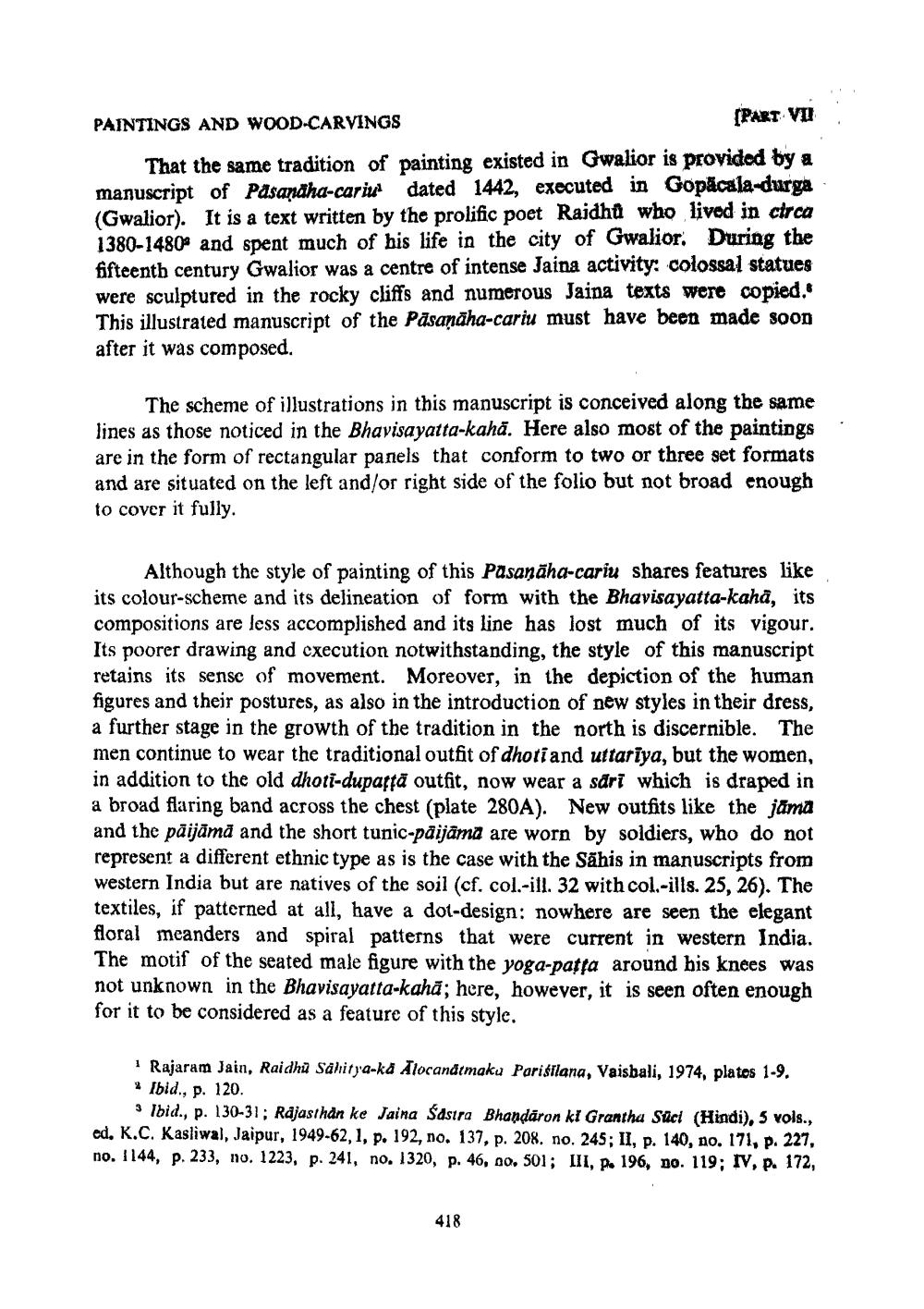________________
PAINTINGS AND WOOD-CARVINGS
[PART VII
That the same tradition of painting existed in Gwalior is provided by a manuscript of Pasandha-cariu dated 1442, executed in Gopacala-durga (Gwalior). It is a text written by the prolific poet Raidha who lived in circa 1380-1480 and spent much of his life in the city of Gwalior. During the fifteenth century Gwalior was a centre of intense Jaina activity: colossal statues were sculptured in the rocky cliffs and numerous Jaina texts were copied. This illustrated manuscript of the Pasandha-cariu must have been made soon after it was composed.
The scheme of illustrations in this manuscript is conceived along the same lines as those noticed in the Bhavisayatta-kahā. Here also most of the paintings are in the form of rectangular panels that conform to two or three set formats and are situated on the left and/or right side of the folio but not broad enough to cover it fully.
Although the style of painting of this Pasandha-cariu shares features like its colour-scheme and its delineation of form with the Bhavisayatta-kahā, its compositions are less accomplished and its line has lost much of its vigour. Its poorer drawing and execution notwithstanding, the style of this manuscript retains its sense of movement. Moreover, in the depiction of the human figures and their postures, as also in the introduction of new styles in their dress, a further stage in the growth of the tradition in the north is discernible. The men continue to wear the traditional outfit of dhoti and uttariya, but the women, in addition to the old dhoti-dupatta outfit, now wear a sari which is draped in a broad flaring band across the chest (plate 280A). New outfits like the jama and the päijämä and the short tunic-päijämä are worn by soldiers, who do not represent a different ethnic type as is the case with the Sähis in manuscripts from western India but are natives of the soil (cf. col.-ill. 32 with col.-ills. 25, 26). The textiles, if patterned at all, have a dot-design: nowhere are seen the elegant floral meanders and spiral patterns that were current in western India. The motif of the seated male figure with the yoga-patta around his knees was not unknown in the Bhavisayatta-kahd; here, however, it is seen often enough for it to be considered as a feature of this style.
1 Rajaram Jain, Raidha Sahitya-ka locandtmaka Parisllana, Vaisbali, 1974, plates 1-9. * Ibid., p. 120.
Ibid., p. 130-31; Rajasthan ke Jaina Sastra Bhandaron kl Grantha Süel (Hindi), 5 vols., ed, K.C. Kasliwal, Jaipur, 1949-62, 1, p. 192, no. 137, p. 208. no. 245; II, p. 140, no. 171, p. 227, no. 1144, p. 233, no. 1223, p. 241, no. 1320, p. 46, no. 501; III, p. 196, no. 119; IV, p. 172,
418




